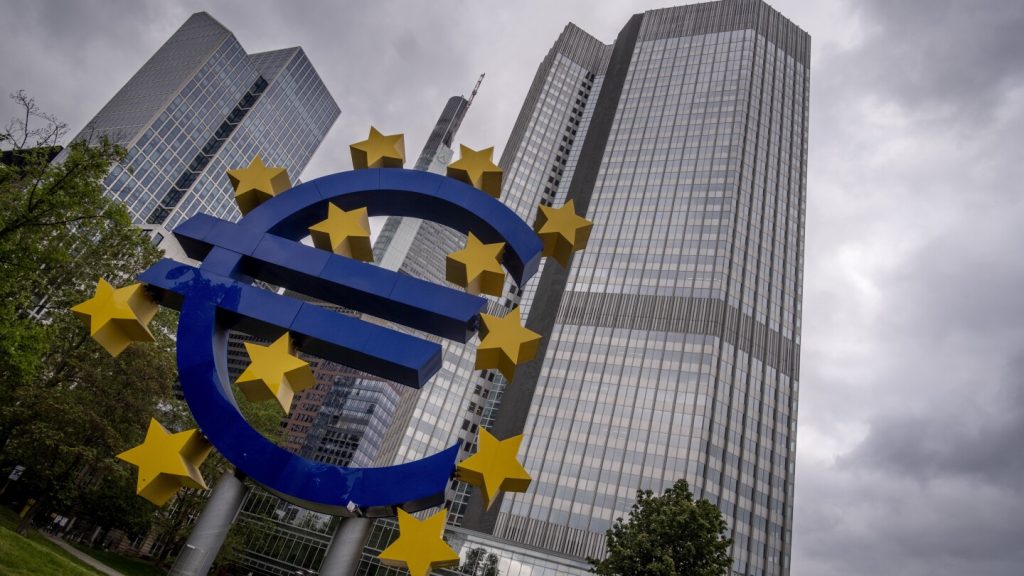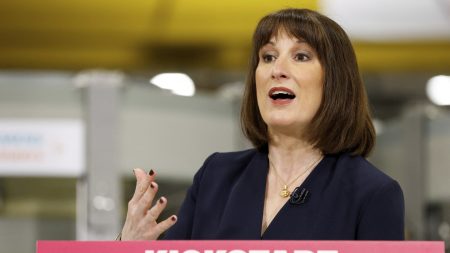1. European Central Bank Cuts Interest Rates to Stimulate Growth
The European Central Bank (ECB) took a significant step on Thursday, February 22, by cutting its key interest rate in an effort to revitalize an economy that is struggling to gain momentum. The benchmark rate was reduced by a quarter percentage point to 2.75% during a meeting held at the ECB’s headquarters in Frankfurt, Germany. This move comes at a time when consumers, still reeling from the effects of inflation, are cautiously assessing their spending habits, while businesses grapple with the uncertainty caused by political instability in key European economies like France and Germany.
ECB President Christine Lagarde emphasized that the “disinflation process is well on track” and expressed confidence that inflation would fall to the bank’s target of 2% by the end of this year. She highlighted that the rate cuts would provide necessary support to the economy, which continues to face challenges despite the gradual fading of restrictive monetary policy effects. The ECB’s decision marks the fourth consecutive rate cut and the fifth since the benchmark rate reached a record high of 4%.
2. Economic Stagnation in Europe: Growth vs. Inflation Concerns
The European economy has been grappling with stagnation, particularly in the final quarter of 2024, during which the 20-country eurozone recorded zero growth, according to Eurostat, the EU’s statistics agency. For the entire year, the economy managed a meager 0.7% growth. This slowdown is a stark contrast to the robust growth observed in the U.S. economy, which expanded at an annual rate of 2.3% in the fourth quarter.
Inflation, while still a concern, has subsided from its peak of 10.6% in October 2022, standing at 2.4% in December. However, the focus has shifted from controlling inflation to addressing the sluggish growth, as consumers remain cautious about spending and businesses face uncertainties. The German economy, once the growth engine of Europe, contracted by 0.2% in the fourth quarter and 0.2% for the entire year, marking its second consecutive year of declining output. The outlook for 2025 is equally grim, with the German government slashing its growth forecast from 1.1% to 0.3%.
3. Contrasting Fortunes: Europe and the U.S. Economy
The U.S. economy continues to exhibit resilience, with a 0.6% growth in the fourth quarter, contributing to an annual growth rate of 2.3%. This growth underscores the stark contrast between the performances of the U.S. and European economies. While the U.S. Federal Reserve opted not to cut rates, signaling confidence in its economic trajectory, the ECB’s rate cuts reflect the challenges facing Europe.
Germany, in particular, is facing multiple headwinds, including the loss of cheap energy from Russia, bureaucratic inefficiencies, and political paralysis. These factors have contributed to its economic contraction and tepid growth prospects. Businesses are also unsettled by potential trade disruptions under the new administration of U.S. President Donald Trump, whose advocacy for higher import tariffs could further strain Europe’s export-dependent economy.
4. Political Turmoil in Germany and Its Economic Implications
Germany’s economic slowdown is compounded by its political instability. The collapse of Social Democratic Chancellor Olaf Scholz’ governing coalition has led to months of political bickering, with no clear consensus on how to address the economic challenges. The upcoming national election on February 23 offers a potential resolution to this political impasse, but until then, businesses and consumers remain uncertain about the future direction of government policies.
The political uncertainty has had a ripple effect on the broader European economy, as Germany is the largest economy in the eurozone. The government’s decision to slash its 2025 growth forecast from 1.1% to 0.3% reflects the diminished expectations for economic recovery. Additionally, the cancelling of purchase subsidies for electric vehicles (EVs) has hurt demand for automotive parts, further exacerbating the economic slowdown.
5. Political Paralysis in France and Economic Uncertainty
France, another key player in the European economy, is also mired in political instability, which is expected to persist longer than in Germany. The French parliament is deeply divided, and a new election cannot be held until July at the earliest. The political stalemate has left businesses and consumers uncertain about future government spending, regulatory changes, and tax policies. This uncertainty is particularly concerning, as France is one of the largest economies in the eurozone.
The political paralysis in France is further exacerbated by divisions over how to address the country’s significant budget deficit. The lack of a clear economic strategy has created an environment of uncertainty, which is detrimental to business confidence and consumer spending. Additionally, the election of Donald Trump as U.S. President has introduced new concerns, particularly his stance on tariffs, which could adversely impact Europe’s export-oriented economy.
6. Consumer Sentiment and the Broader Implications for Europe’s Economy
Consumer sentiment across Europe remains muted, as individuals continue to grapple with the aftermath of inflation and uncertainty about the future. Measures such as the economic sentiment index compiled by the EU’s executive commission indicate that consumers are still fretting over price tags. It is unclear whether this anxiety stems from expectations of higher prices in the future, potentially influenced by the threat of tariffs under the Trump administration, or if it is a response to recent price increases.
The broader implications of Europe’s economic stagnation and political turmoil are profound. The slowdown in growth, coupled with high energy prices and political instability, has created a challenging environment for businesses and consumers alike. While the ECB’s rate cuts provide some relief, the road to recovery is likely to be long and arduous. The upcoming elections in Germany and France offer a potential turning point, but until then, the European economy will continue to navigate a fragile and uncertain landscape.








